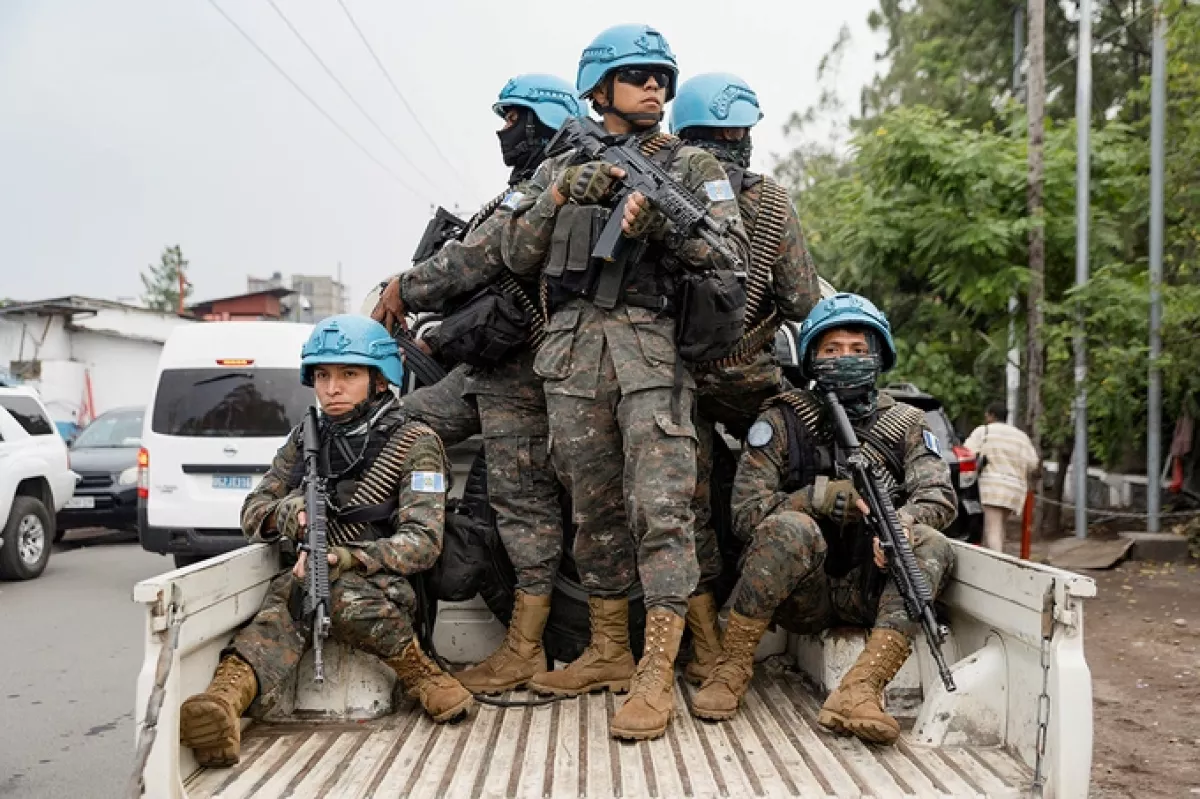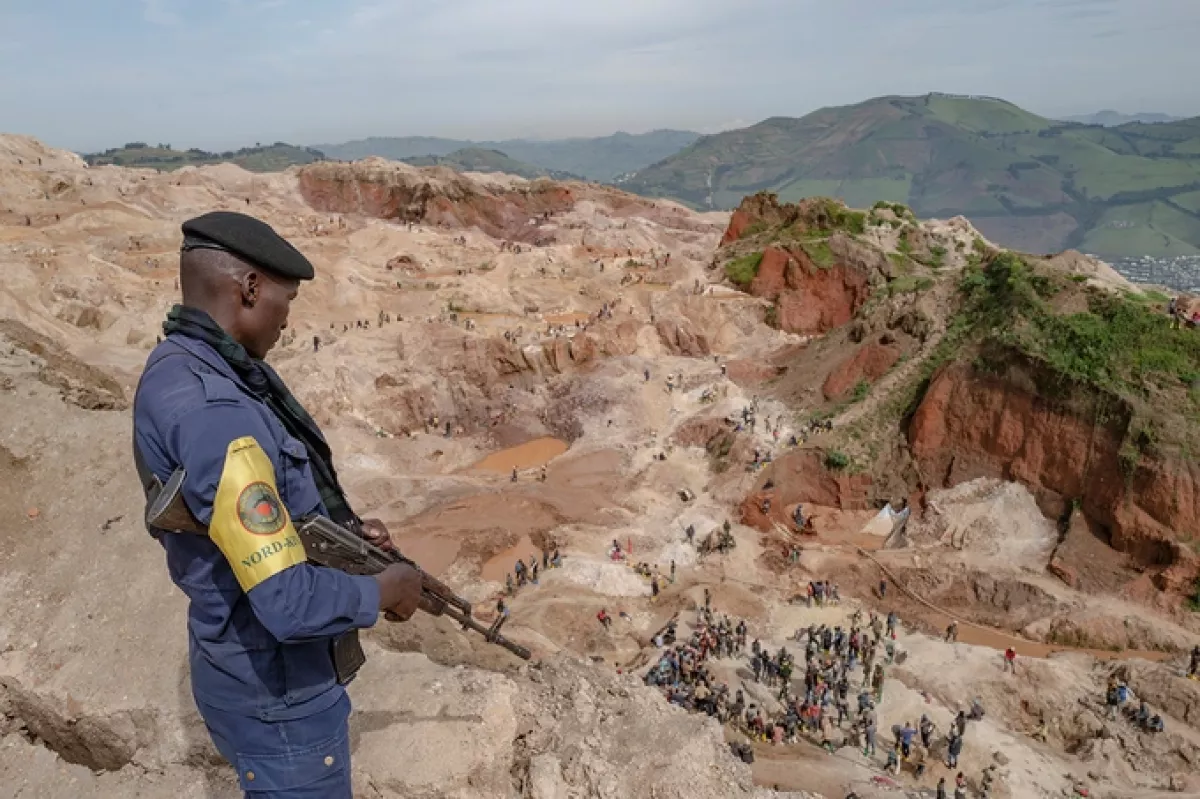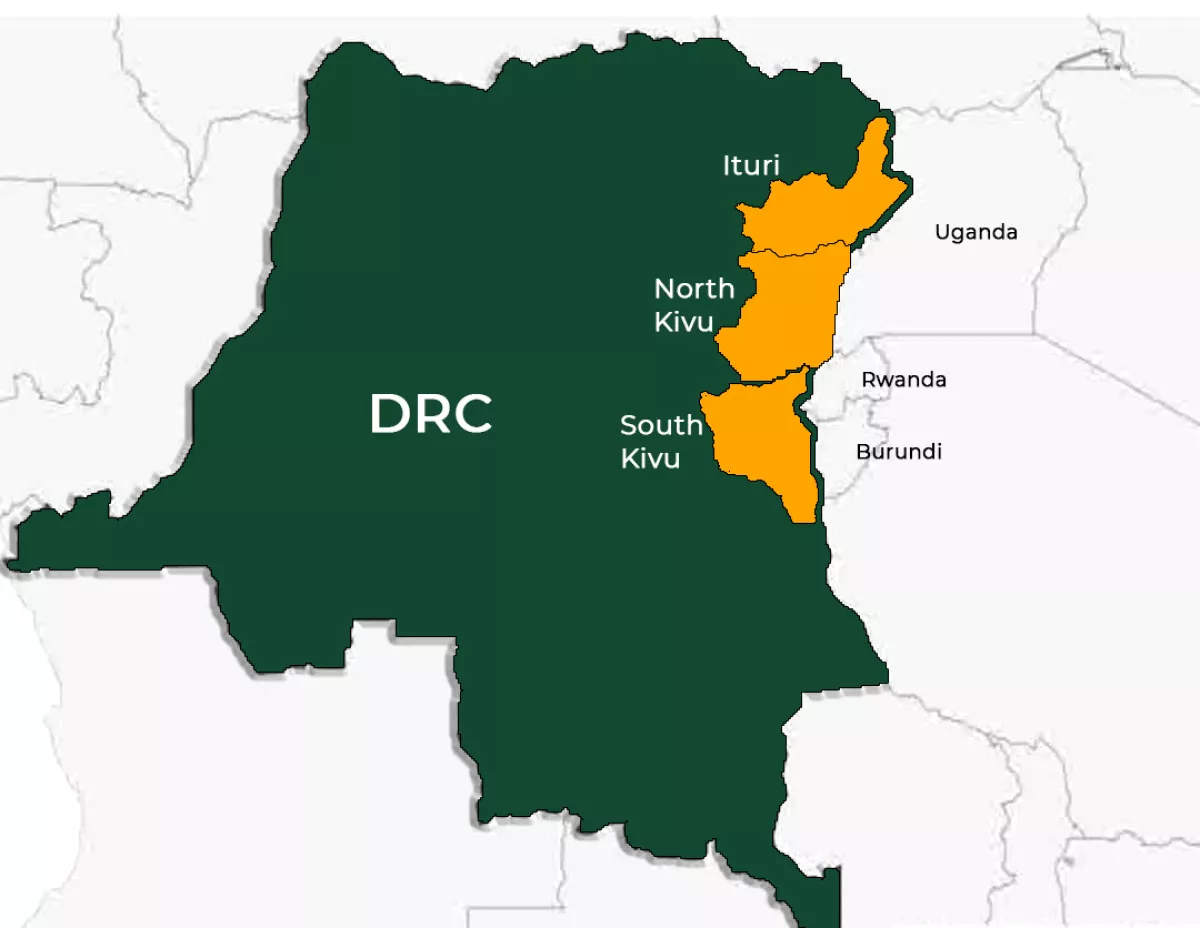What led to latest rounds of violence in Democratic Republic of Congo?
The Democratic Republic of Congo (DRC) is once again facing a severe humanitarian crisis as rebel forces have intensified their offensive in the eastern part of the country. The capture of Goma, a vital humanitarian hub, by the M23 rebel group in January represents the worst escalation of violence since 2012. This resurgence of conflict has led to mass displacement, widespread violence, and increased regional tensions, particularly between DRC and neighbouring Rwanda. The conflict, which involves numerous armed groups and regional actors, is driven by historical grievances, weak governance, and competition over natural resources.
The ongoing violence in DRC is largely confined to the eastern provinces of North Kivu, South Kivu, and Ituri, where over 120 armed groups operate. The US-based Council on Foreign Relations has grouped the key players in the conflict into two sides: the Congolese government with its allies, and the anti-government rebels supported by Rwanda.
On the government’s side, the Congolese military is allied with the Democratic Forces for the Liberation of Rwanda (FDLR), a militia composed of Hutu extremists who fled Rwanda after the 1994 genocide in which over 800,000 people mainly of Tutsi ethnicity were killed by Hutu militants. During the Belgian colonialization of the region, authorities propagated the differences between these ethnicities by referring to Hutus as a "superior ethnicity", sparking interracial tensions. Despite its declining strength, the FDLR remains a factor in the conflict. Additionally, various Mai-Mai militias, which are local self-defense groups with their own agendas, fight alongside government forces.
The main rebel group, M23, consists mostly of ethnic Tutsis and has a long history of conflict with the Congolese government. The group is backed by Rwanda, whose long-standing president Paul Kagame is also of Tutsi origin, which supplies it with weapons, ammunition, and even military personnel. Other anti-government groups include the Allied Democratic Forces (ADF), a Ugandan-originated militia with ties to ISIS. The United Nations (UN) peacekeeping force, consisting of 11,000 troops, also operates in the region, though its effectiveness is limited due to its primarily defensive mandate.

Causes of the Conflict
The root causes of the conflict can be examined on three levels: local, national, and regional.
At the local level, ethnic tensions, disputes over land, and control over the massive sources of valuable minerals such as gold and coltan contribute to violence. DRC is the world’s primary source of coltan with almost half of all global coltan, which is used in cell phones, laptops and other devices, sourced from these mines. The question of who is considered “Congolese” remains a contentious issue, fueling identity-based conflicts.

At the national level, the article's authors argue that the Congolese government, led by President Félix Tshisekedi, is weak and lacks legitimacy. Tshisekedi’s initial rise to power in 2019 was marked by allegations of electoral fraud, and the 2023 elections were also highly disputed. The government’s security forces are often predatory, harassing civilians rather than protecting them. This lack of a functioning state creates a power vacuum that armed groups exploit.
At the regional level, tensions between DRC and Rwanda have significantly escalated. Rwanda justifies its military presence in eastern DRC by pointing to the threat posed by Hutu militias like the FDLR. However, Rwanda also has economic motivations, as it profits from smuggling gold and minerals out of DRC.
The United States and the European Union (EU) play a role in the conflict through humanitarian aid and diplomatic pressure. Over the past decade, the US has provided $6 billion in aid to DRC and supported UN peacekeeping efforts. Western nations have leverage over Rwanda, which relies heavily on foreign aid. In 2012–2013, international pressure temporarily forced Rwanda to withdraw support for M23, demonstrating that diplomatic actions can influence the conflict.
Historically, DRC’s instability can be traced back to colonial rule and Cold War politics. Belgium’s exploitative colonial policies left behind weak institutions, and after independence in 1960, the American CIA played a role in installing Mobutu Sese Seko, who ruled for decades with American support. According to the article, his corrupt governance set the stage for the country’s collapse into war after his fall in 1997.

The human cost of the conflict is staggering. Since 1996, over six million people have died due to violence, starvation, and disease. Currently, there are six million internally displaced people, with over a million refugees fleeing to neighboring countries. Women and children are particularly vulnerable, facing rampant sexual violence and forced recruitment by armed groups.
The recent wave of violence in Goma has resulted in over 3,000 deaths and displaced 700,000 people since January alone. Shocking reports have emerged of mass sexual violence, including over 100 women being burned alive following a mass prison escape from the Muzenze prison this week . These atrocities highlight the urgent need for international attention and intervention.
The Path to Stability
For long-term peace, the article proposes two major changes necessary to reach this goal. First, DRC needs a legitimate, functional government capable of securing its territory and providing basic services to its people. Second, Rwanda must cease its interference in DRC, which could be achieved through diplomatic and economic pressure from Western allies. While the international community has largely ignored the crisis, it has the power to influence the conflict’s outcome by holding Rwanda accountable and supporting governance reforms in DRC.
The war in eastern Congo is not an inevitable consequence of Africa’s history—it is the result of deliberate political and economic decisions. Without action, the authors fear that the suffering of millions of Congolese civilians will continue, making it imperative for the world to pay attention and act before the crisis worsens further.
By Nazrin Sadigova








